Ballindalloch Castle: "The Pearl of the North"
Fergus Bisset visited Banffshire to play this Donald Steel/Tom Mackenzie course
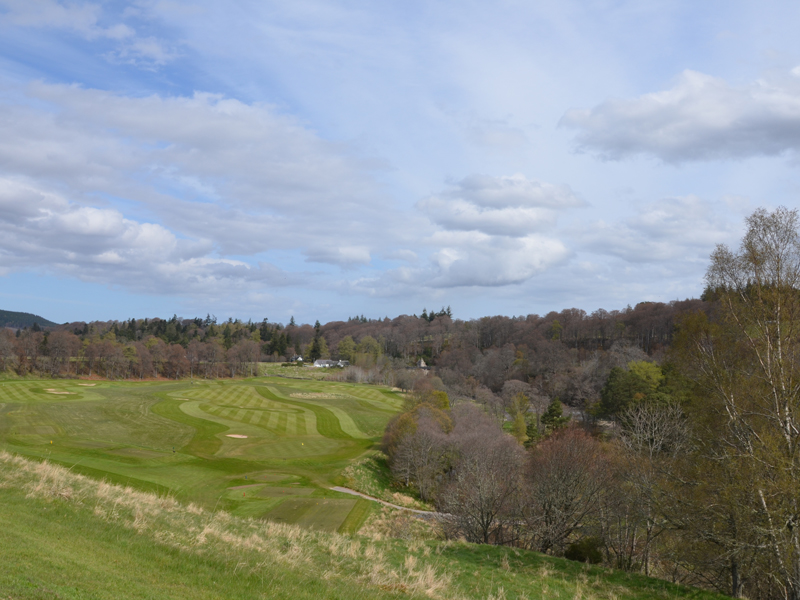

A treasure in beautiful Banffshire, the Ballindalloch Estate is home to a captivating castle and gardens, a pioneering distillery and a superb golf course designed by Donald Steel and Tom Mackenzie.
I’ve been aware of the golf course at Ballindalloch for some time. It has a great reputation, having been designed by Donald Steel and Tom Mackenzie – the men responsible for the incredible track at Skibo Castle, plus numerous other projects around the world. Over the last 10 years or so, I’ve made various vows that I’ll go to see Ballindalloch for myself; after all, the estate is only an hour’s drive over the Lecht from my house on Deeside. But there’s something about proximity that makes it easy to delay. “Yes, next month I’ll definitely take a trip over, next year for sure…” Suddenly 10 years have passed.
But, thankfully, I was spurred back into action by an email from the current custodian of the Ballindalloch estate Guy Macpherson-Grant. He’s a pal of my wife’s cousin and had heard through the grapevine there was a golf journalist living just over the hill. He suggested I headed across for a round of golf and a look around the castle and distillery. Golf, history and whisky – three of my favourite things – it wasn’t a tough sell.
I arrived on the first really warm day of this year, the sun was peaking through as Jessie (wife) and I made the stunning drive into Banffshire. The road from Tomintoul to Ballindalloch via Tomnavoulin and Glenlivet is one of the most beautiful you’ll find. Heather topped hills, the sparkling waters of the River Avon (pronounced A’an) as it meanders towards its meeting with the Spey, forests and fields populated by Highland cows and (at this time of the year) frolicking lambs, we were in high spirits by the time we arrived at the gorgeous wee clubhouse at Ballindalloch Castle Golf Club.
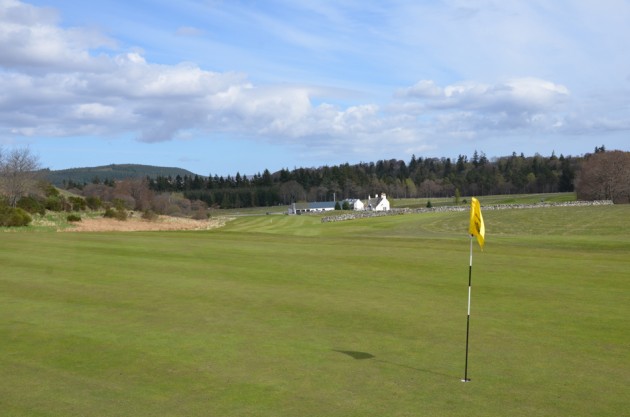
A former farmhouse, the traditional whitewashed building has been renovated and turned into a comfortable and classy clubhouse, staffed daily from 9am to 5pm. The standard to which the building has been fitted gave me an inkling of the level of care and attention to detail that I was going to find at Ballindalloch: Tartan carpet, golfing pictures on the wall, enticingly comfy sofas offering views out towards the course and, the obligatory, well-stocked bar… It’s the sort of place one could happily spend an hour or two dissecting triumphs and tribulations on the fairways.
And it was towards (with luck) the fairways that Guy and I headed. He’s been back at Ballindalloch for 18 months now and, together with his wife Victoria and three daughters, is clearly intent on making a great success of the various projects on the estate and welcoming as many visitors as possible to the lands his family have called home for 24 generations.
Get the Golf Monthly Newsletter
Subscribe to the Golf Monthly newsletter to stay up to date with all the latest tour news, equipment news, reviews, head-to-heads and buyer’s guides from our team of experienced experts.
Guy told me he hadn’t swung a club for almost a year before proceeding to spank one away up the fairway on the par-5 1st. I wondered if I was being set up and my suspicions were not assuaged when I had to stand off my drive as a Roe buck scampered across the fairway just in front of me. “Was that planned?” I asked before hooking into the rough. As we walked down, I suggested we didn’t play for money but just enjoyed the day and the course.
Laid out and opened for play in 2003, Ballindalloch Castle golf course is a nine-hole track with two sets of tees on each hole – in most cases these deliver quite a different prospect, meaning you face new challenges the second time round.
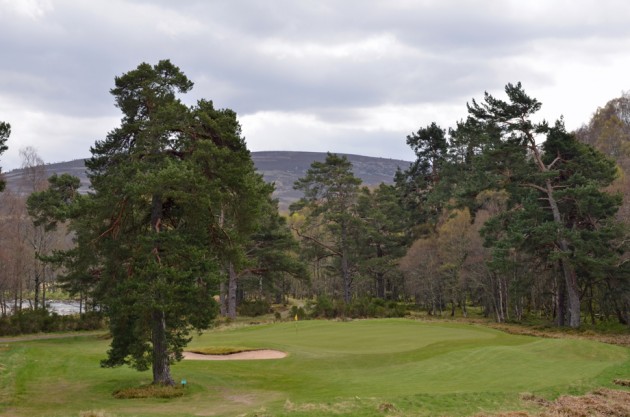
The first thing that must be stressed is that this is a proper golf course. This is no pitch and putt, it’s no amateurish piece of golfing architecture. This is an excellent design (as you would expect from Steel and Mackenzie) and it has been properly constructed. The fairways are shaped and sweeping, the green complexes have been cleverly thought out and the greens themselves are of high quality – firm and fast, even early in the season. The head greenkeeper Muir clearly does a fine job to maintain the track in great condition, working with help from Guy’s father who is a keen golfer and was a driving force in the construction of the course here.
From the back pegs the two nines measure 3,299 yards and 3,196 yards for a total of 6,495 yards against a par of 72. As I said, it’s a long way from being a pitch and putt.
The first three and a bit holes are played on a plateau before the par-5 4th drops down to the valley floor and towards the banks of the Avon. The 4th is a great hole, played on two levels. The tee shot must find the fairway at the top of a ridge before the second is fired off towards another section of fairway some 50 feet below – it’s a great fun shot to hit (and to watch) as you see its entire flight as it drops, hopefully, towards the short grass...
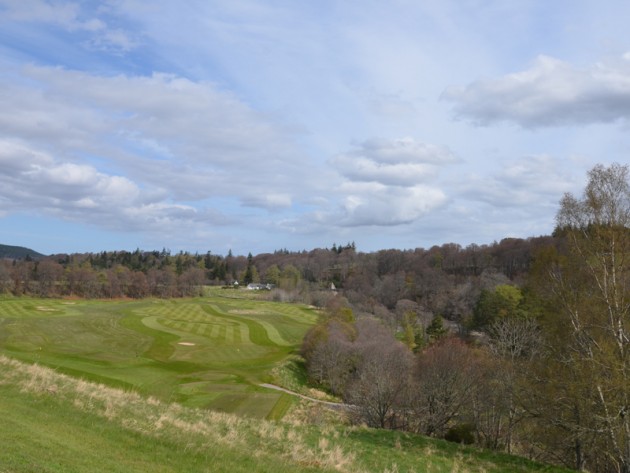
The holes closest to the Avon, the lovely par-3 7th and the testing par-4 8th are perhaps the best on the course. On the short hole, the tee shot is over a water hazard to a green surrounded by pines while, on the next, the drive must be threaded through the trees to find a narrow fairway.
What strikes you on this course is a feeling of serenity. It’s quiet and you’re surrounded by heather-clad hills, the river bubbles past and you can truly distance yourself from reality. My golf was fairly distant for most of the round but it didn’t matter, Ballindalloch is a course on which to enjoy the sense of place and simply to appreciate the beauty of the layout and its surrounds. I don’t like using the phrase “hidden gem” so I’ll stick with the historic tag-line attributed to the castle – “the pearl of the north;” this is a wee pearl.
The castle is extremely impressive and is open to visitors, as are the gardens and grounds. Dating from the 16th century, the building is full of history and some incredible works of art, including pieces by Allan Ramsay and a fine selection of 17th century Spanish paintings. The castle has a feel of being lived in and a section of it still is, by Guy and the girls. This is a home as well as a place of historic and cultural importance and that’s lovely to see.
Find more about Ballindalloch castle by clicking here.
Following a hearty bowl of soup and tasty beef sandwich (the estate is home to the oldest herd of Aberdeen Angus cattle in the world,) Jessie and I went to meet with Brian Robinson who looks after the Ballindalloch Single Estate Distillery for short tour of the property.
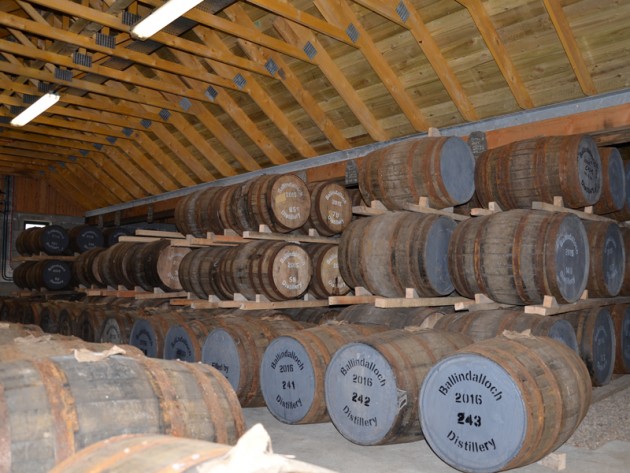
It’s important to note in the title of the distillery – “Single Estate.” This is the first of its kind in Scotland, the Ballindalloch distillery uses barley grown on the estate and water from the natural springs on the hill. The whisky is distilled and matured on the estate and the draff left over from mashing feeds the Aberdeen Angus cattle. It’s all wonderfully self-sustaining.
The distillery itself has been constructed in a converted steading just alongside the golf course. It has been done to the very highest level. To fit into the slightly awkward spaces of the steading, the equipment has been custom-made; almost everything bespoke. I’ve been to quite a few distilleries and have seen nothing quite like this. Guy and Brian have no qualms in saying that they are trying to produce something very high end here and the quality of the building work, the distilling equipment and the décor of the reception rooms provides evidence of this.
Touring round Jessie and I couldn’t hold in the oohs and aahs as we saw the striking copper stills, the amazing old, but beautifully restored, spirit safe, the satisfying stacks of barrels full of maturing spirit and the opulent “club room” where those who have enjoyed a tour can relax in leather armchairs to contemplate the precision and attractiveness of the whole process.
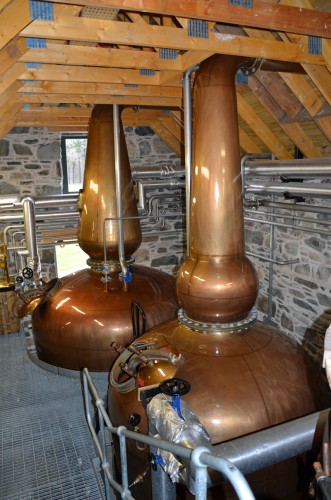
Production began at the distillery in September 2014 so it will be some time before we can taste a Ballindalloch single malt (another 8 years at least) but it should be worth the wait. The distillery is fully manually operated and the casks for maturation hand selected – some ex bourbon, others ex sherry – I’d be quietly confident that what is being produced here will be very good indeed.
That seems a key philosophy at Ballindalloch: if you’re going to do something then do it properly. The castle and grounds are meticulously maintained, the farming and forestry are sympathetically managed, the distillery is of the highest spec and the golf course is by two of the most eminent golf architects of recent times. On the drive home I felt I’d been let in on an amazing secret. I advise you to be let in on it too.
For more information on the Ballindalloch Single Estate Distillery click here.
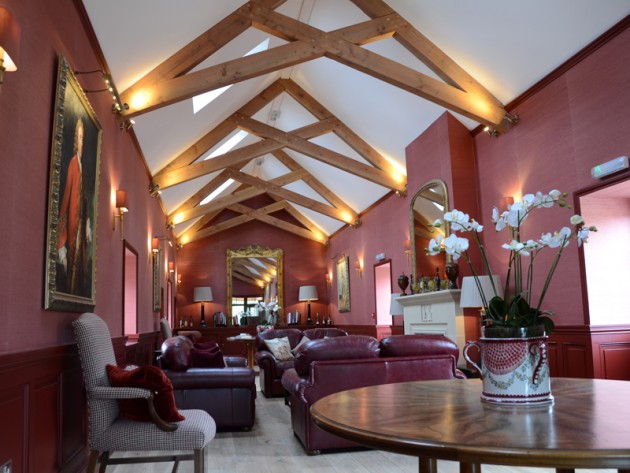

Fergus is Golf Monthly's resident expert on the history of the game and has written extensively on that subject. He has also worked with Golf Monthly to produce a podcast series. Called 18 Majors: The Golf History Show it offers new and in-depth perspectives on some of the most important moments in golf's long history. You can find all the details about it here.
He is a golf obsessive and 1-handicapper. Growing up in the North East of Scotland, golf runs through his veins and his passion for the sport was bolstered during his time at St Andrews university studying history. He went on to earn a post graduate diploma from the London School of Journalism. Fergus has worked for Golf Monthly since 2004 and has written two books on the game; "Great Golf Debates" together with Jezz Ellwood of Golf Monthly and the history section of "The Ultimate Golf Book" together with Neil Tappin , also of Golf Monthly.
Fergus once shanked a ball from just over Granny Clark's Wynd on the 18th of the Old Course that struck the St Andrews Golf Club and rebounded into the Valley of Sin, from where he saved par. Who says there's no golfing god?
-
 Volvo China Open 2025 Picks, Odds And Predictions
Volvo China Open 2025 Picks, Odds And PredictionsFollowing a break for The Masters, the DP World Tour returns for the final two weeks of its Asian Swing and the Volvo China Open is the penultimate event
By Jonny Leighfield
-
 Rory McIlroy's Sports Psychologist Explains Why He 'Didn't Talk' To Bryson DeChambeau In Masters Final Round
Rory McIlroy's Sports Psychologist Explains Why He 'Didn't Talk' To Bryson DeChambeau In Masters Final RoundDeChambeau raised eyebrows at Augusta National when claiming that McIlroy wouldn't engage in conversation during the final round of The Masters
By Jonny Leighfield